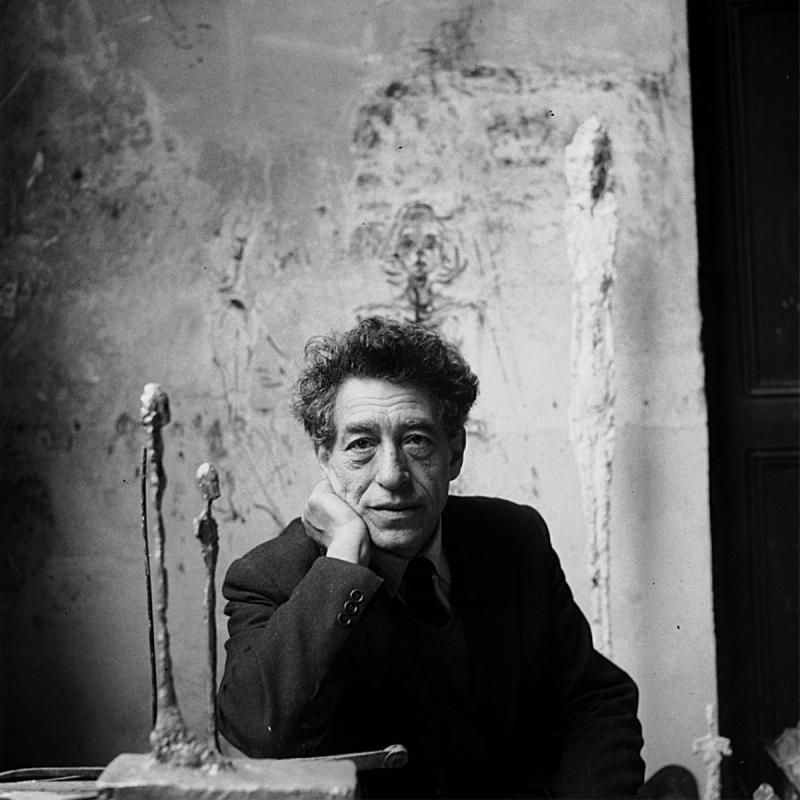Alberto Giacometti
Alberto Giacometti (1901–1966) was most well-known for his 1960s “Walking Man” sculptures, consisting of roughly hewn, unnervingly thin and elongated bronze figures in motion, which evoke an aura of alienation even when grouped. Born in Borgonovo, Switzerland, in 1901, the artist attended the School of Fine Arts from 1919-20, and then moved to Paris in 1922 to study with sculptor Antoine Bourdelle. In France, Giacometti became associated with artists Joan Miró, Max Ernst, and Pablo Picasso. Towards the end of his life, the artist gained immense popularity among audiences and critics, winning the grand prize for sculpture at the 1962 Venice Biennale. Three years later he was given a one-person show at the Museum of Modern Art, NY, just one year before he passed away in 1966. Since then, the artist’s oeuvre has been the subject of solo exhibitions at numerous museums worldwide, including the Pushkin Museum, Moscow, the Centre Pompidou, Paris, the Kunsthalle Hamburg, and the National Portrait Gallery, London. Giacometti’s work is included in the collections of the Art Institute of Chicago, the Hirshhorn Museum and Sculpture Garden, Washington, D.C., the Solomon R. Guggenheim Museum, New York, and the Tate, London, among many other institutions.
Selected Artworks
- Alberto Giacometti
- Untitled (Self-Portrait), 1965
- Graphite on paper
- 15⅛ × 11⅝ inches (38.4 × 29.5 cm)
- Alberto Giacometti
- Nature morte aux pommes, 1960
- Oil on canvas
- 18⅛ × 21⅝ inches (46 × 55 cm)
- Alberto Giacometti
- Buste de Diego au col roulé, 1951
- Painted bronze
- 13¾ × 12³⁄₁₆ × 6¹¹⁄₁₆ inches (35 × 31 × 17 cm)
